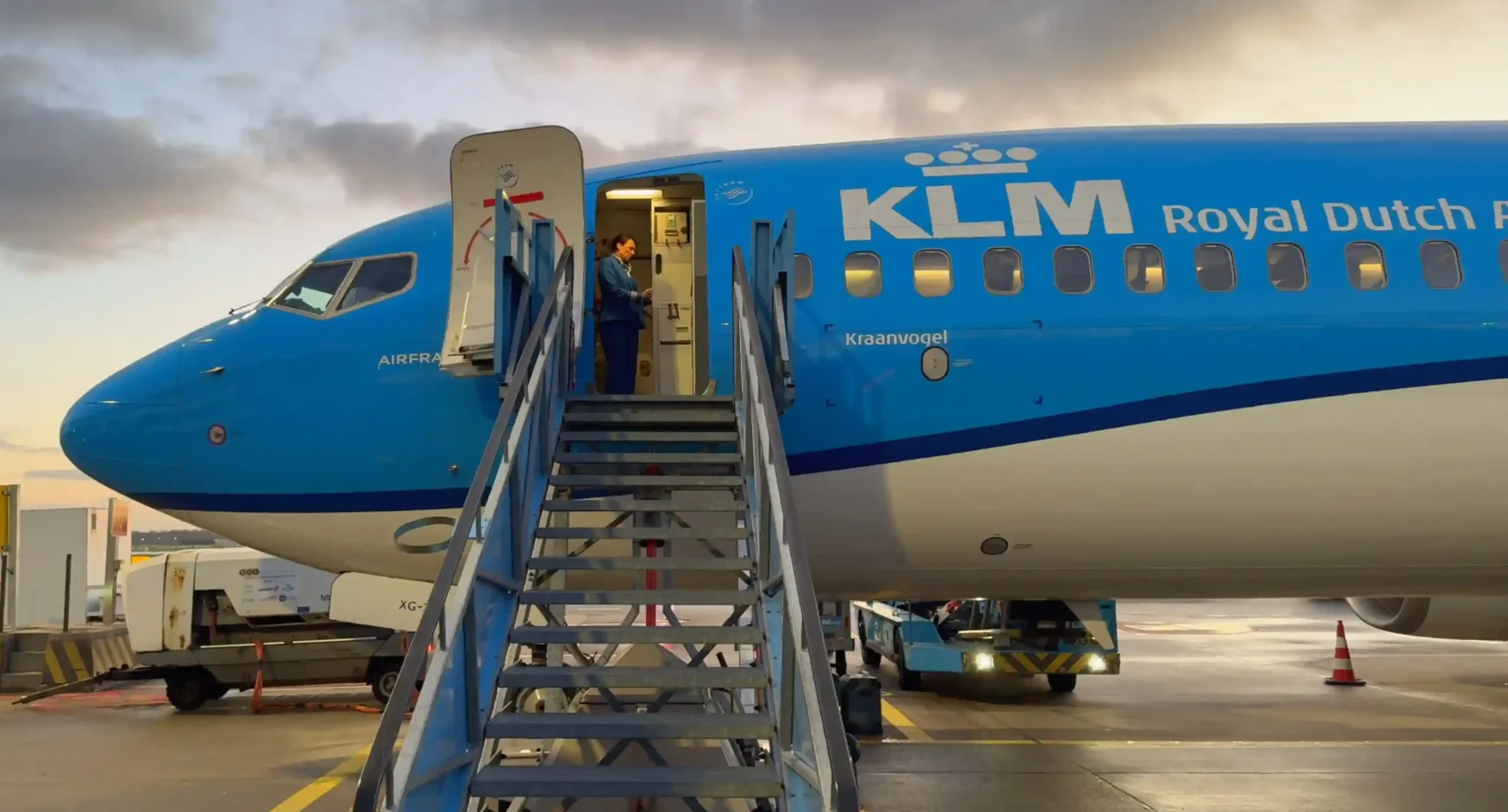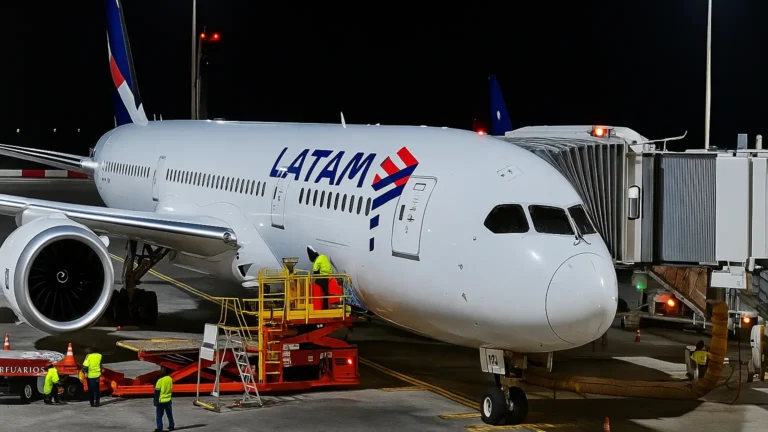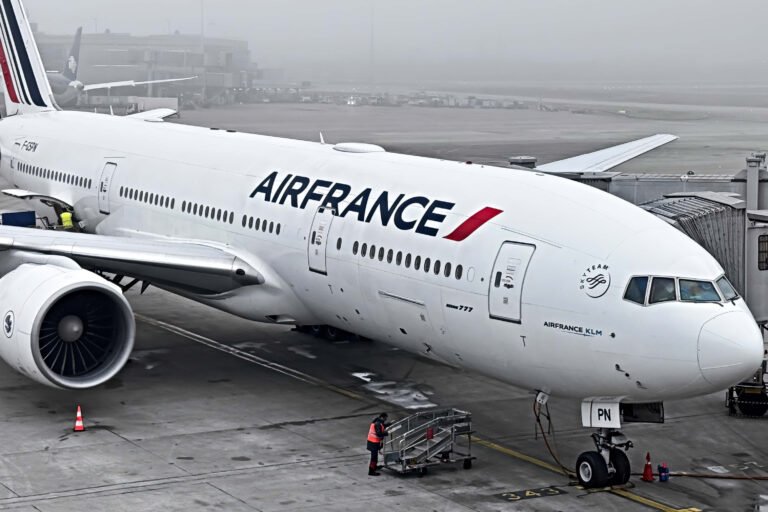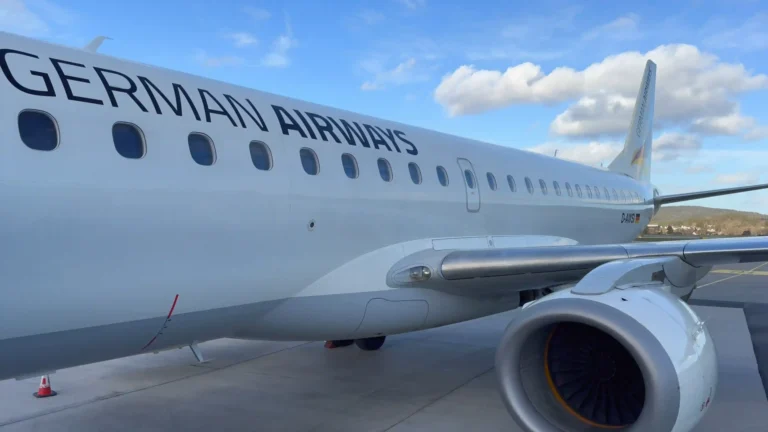KLM Business Class Review from Madrid to Amsterdam on the 737
KLM has a strong reputation as one of Europe’s most reliable legacy carriers, with a loyal following among both business and leisure travelers. But what can you expect on a short-haul Business Class flight within Europe? On this early-morning hop from Madrid (MAD) to Amsterdam (AMS), I put KLM’s Boeing 737 Business Class to the test.
In this detailed trip report, I’ll take you through every step of the journey, including:
- Early morning check-in at Madrid-Barajas Airport
- Priority boarding and first impressions of the 737 cabin
- Comfort in seat 5A with the blocked middle-seat setup
- Breakfast service onboard
- In-flight service and atmosphere on a two-and-a-half-hour flight
- Arrival into Amsterdam Schiphol (AMS), KLM’s busy global hub
Flight details
- Flight number: KL1702
- Date: January 9, 2025
- Route: Madrid (MAD) → Amsterdam (AMS)
- Departure: 06:00 local time
- Arrival: 08:40 local time
- Duration: ~2h 40m
- Aircraft: Boeing 737-800
- Class: Business Class (European Business layout)
- Seat: 5A
- Frequent flyer program: Flying Blue / SkyTeam
If you’re considering a flight within Europe and are curious about KLM’s short-haul Business Class, this review will give you a clear idea of what to expect.
Madrid Airport
My journey began in the early hours of the morning at Madrid-Barajas Adolfo Suárez Airport (MAD), Spain’s largest and busiest airport. Despite the 06:00 departure time, the terminal was already buzzing with travelers heading across Europe.
Check-in for KLM Business Class was located in Terminal 2, with dedicated counters for premium passengers. The process was quick and efficient, with priority tags attached to my luggage. Security at Madrid can sometimes be unpredictable, but at this hour it moved smoothly, and within minutes I was airside.
Madrid-Barajas is a spacious and modern airport, with a wide selection of shops, cafés, and restaurants even in the early morning. While not quite as architecturally striking as Terminal 4 (used mainly by Iberia), the KLM departure area in Terminal 2 was still easy to navigate and well organized.
With check-in and security behind me, it was time to head towards the gate for my short flight north to Amsterdam.
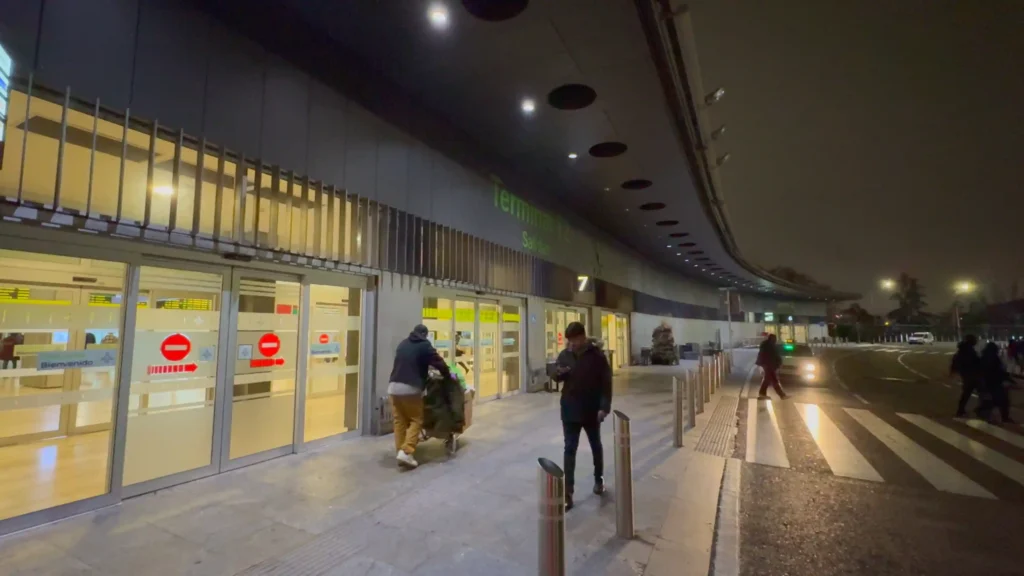
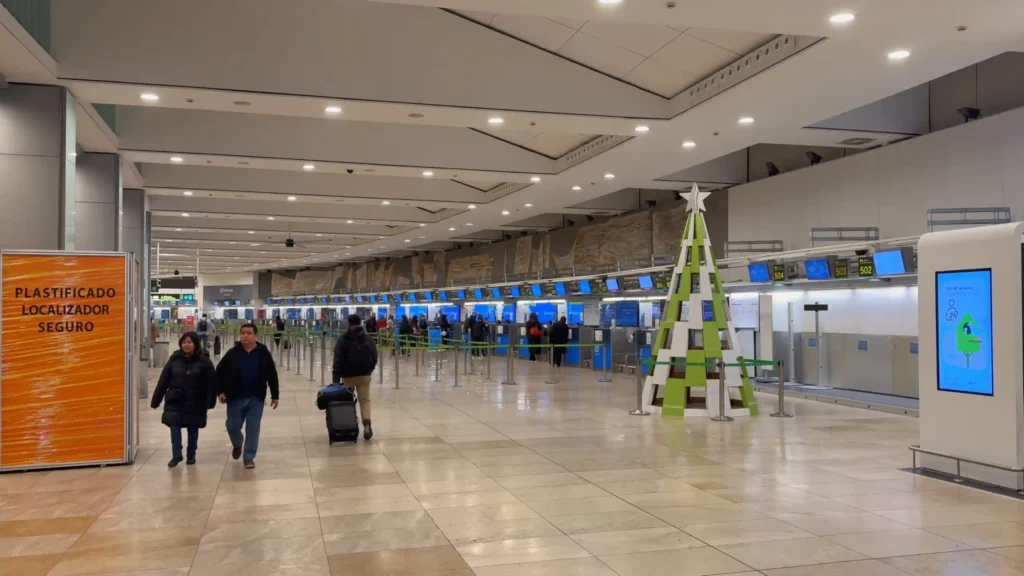
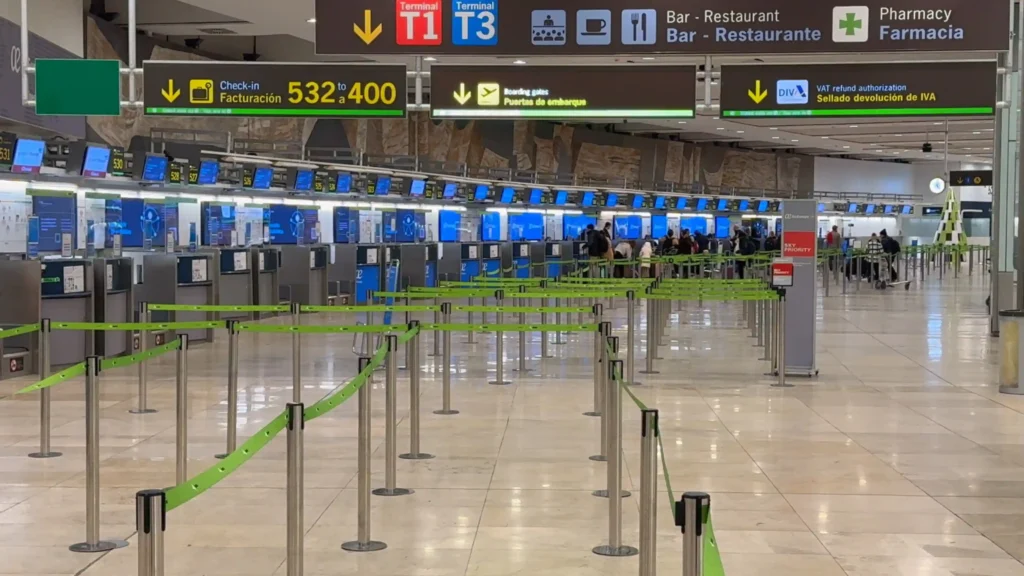

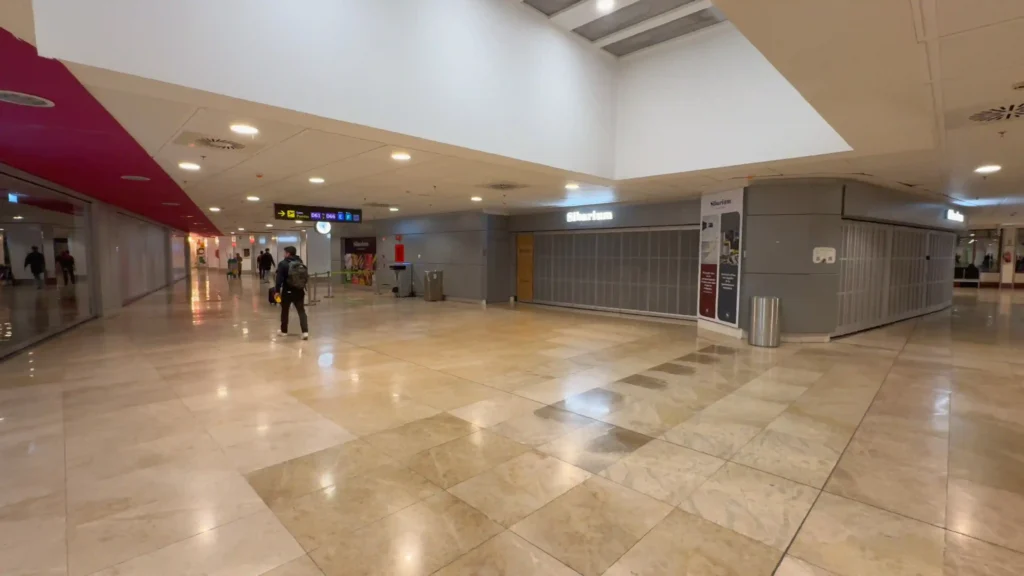

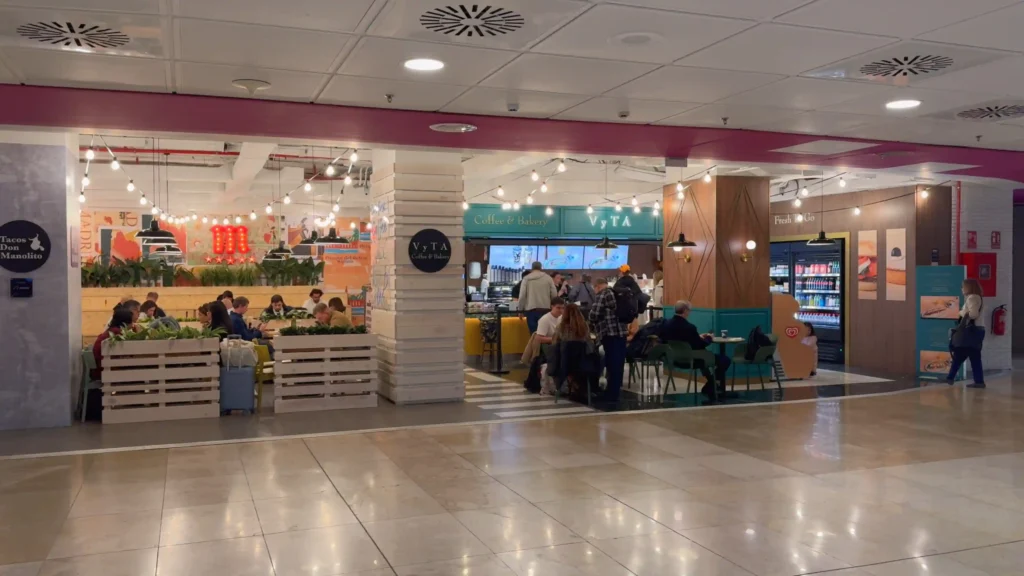
Puerta de Alcalá Lounge
As a KLM Business Class passenger, I had access to the Puerta de Alcalá Lounge in Terminal 2 before my early morning flight to Amsterdam. Unfortunately, this lounge was far from impressive.
The interior looked dated, with worn furniture and a cafeteria-style design that felt more like a Soviet-era canteen than a premium space. The food selection was minimal, with only a few basic cold items available, and overall it lacked the fresh, varied buffet you’d expect from a Business Class lounge at a major European airport.
On the positive side, the lounge did offer excellent views of the apron and runway activity, which made the wait more enjoyable for any aviation enthusiast. Watching early-morning departures while sipping a coffee was the highlight of the experience.
Overall, the Puerta de Alcalá Lounge is functional, but it doesn’t match the quality of KLM’s own lounges in Amsterdam or the standards set by Iberia’s flagship lounges in Madrid. It’s a place to sit quietly and watch the apron, but not much more.


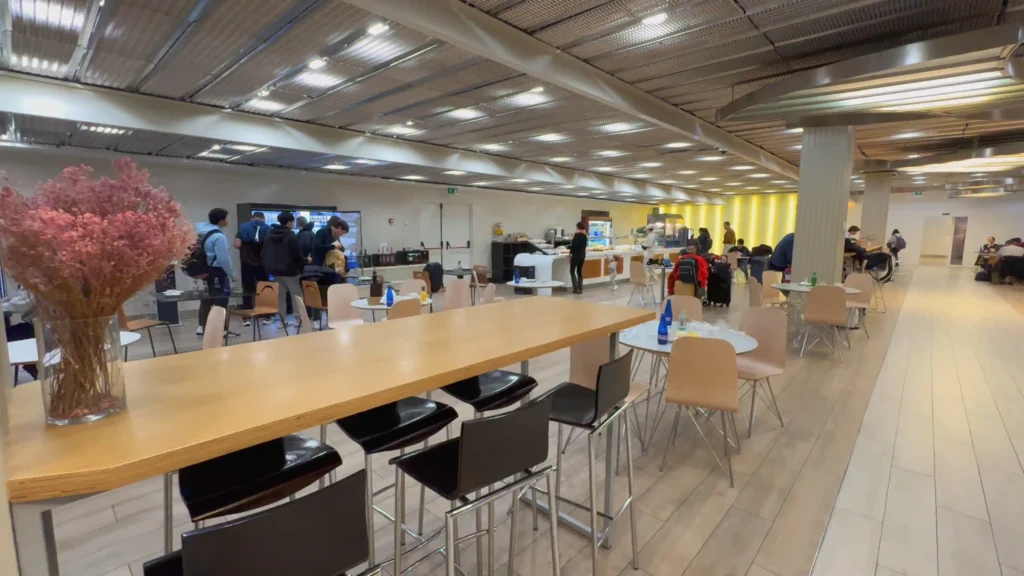

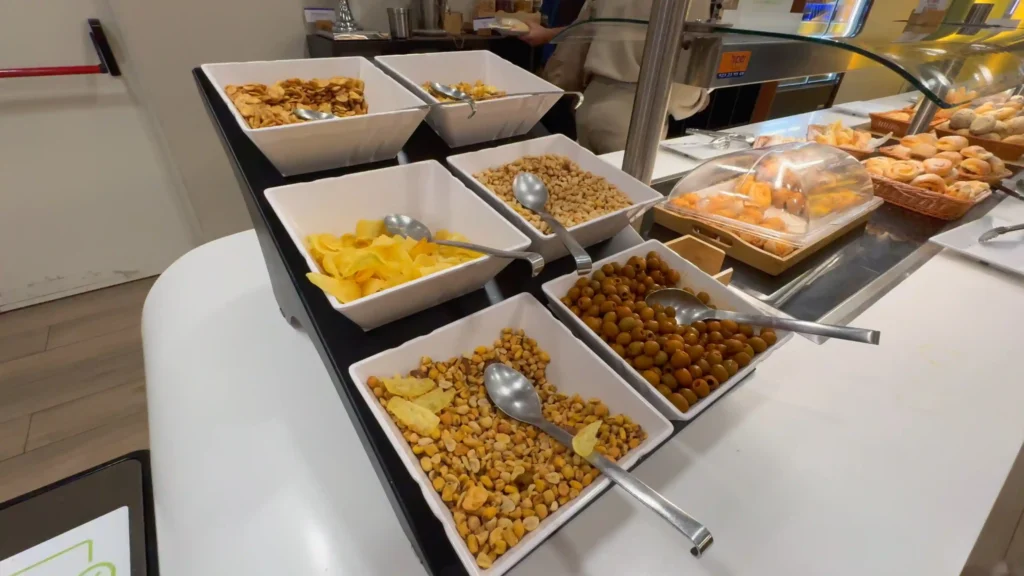

Boarding KLM’s 737
Boarding for KLM flight KL1702 from Madrid to Amsterdam was called right on time, with Business Class and SkyTeam Elite passengers invited to board first. The process was smooth, and soon I was stepping onboard the Boeing 737 that would carry me to Schiphol.
The moment I entered the cabin, it felt like a trip back in time. This particular KLM 737-800 had clearly seen years of service, with its retro-style seats and cabin fittings that wouldn’t look out of place in the 1990s. Still, there was something oddly charming about it — the seats were worn-in but surprisingly comfortable, and the blue KLM color scheme gave the cabin a cozy, familiar feel.
As is standard for European Business Class, the seating layout was 3–3 with the middle seat blocked, providing extra space and a little more privacy for premium passengers. The front rows were separated from Economy by a simple curtain divider, and the overall cabin atmosphere was quiet despite the early departure.
It may not have been the most modern Business Class cabin in Europe, but the comfort and nostalgia gave the flight a unique character.
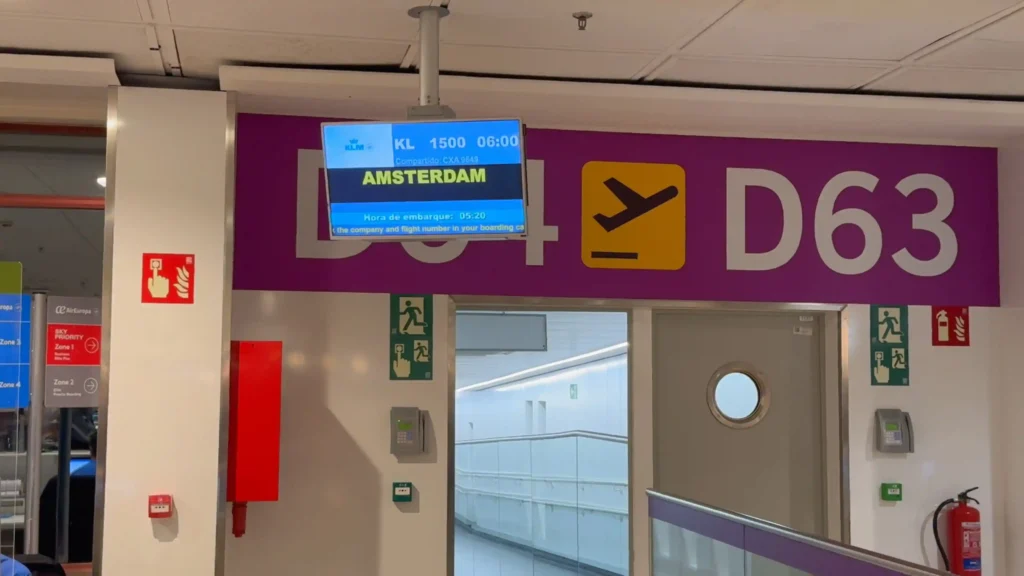
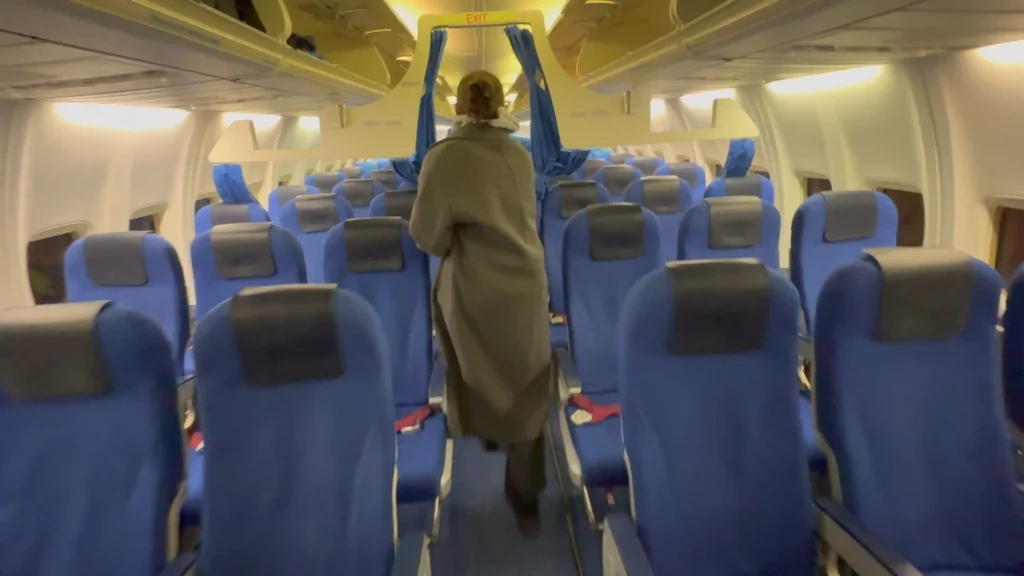

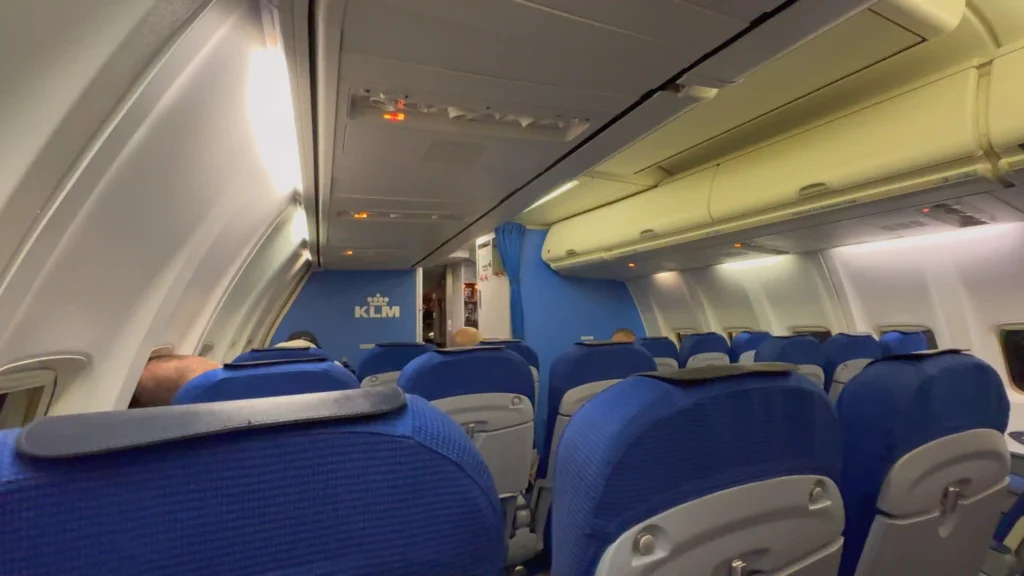

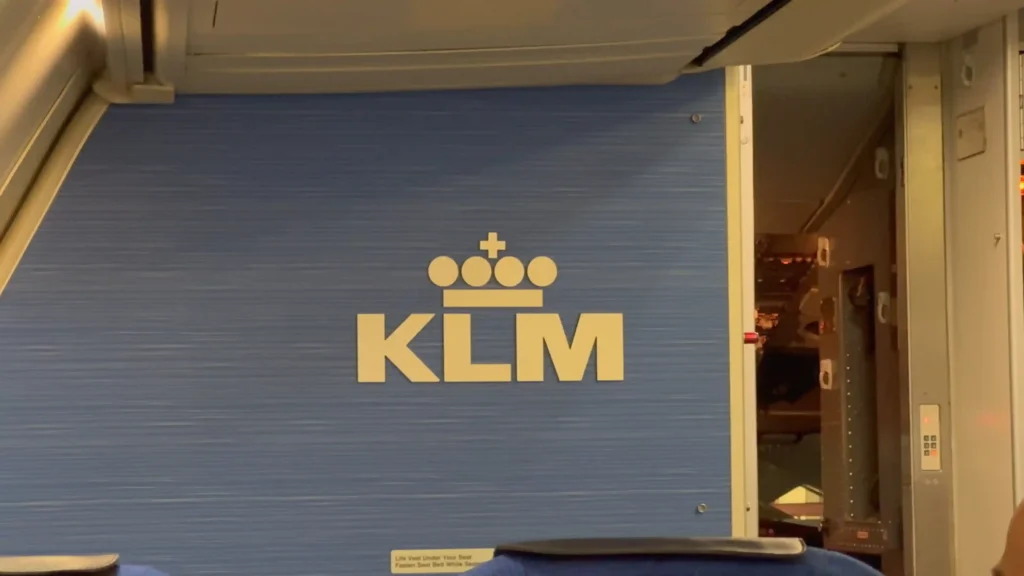
KLM Business Class Seat
For this flight I had seat 5A, a window seat on the left-hand side of the KLM Boeing 737 Business Class cabin. Like most short-haul European configurations, the seat itself was identical to Economy, but with the middle seat blocked to provide more space.
Legroom in row 5 was decent — around 32 inches of pitch — and the seat padding, though old, was actually quite comfortable. The recline was minimal but enough for a short two-and-a-half-hour hop to Amsterdam.
There were no individual seatback screens on this aircraft, as KLM’s short-haul 737s rely on personal devices for entertainment. Wi-Fi was available for purchase, and although speeds were modest, it was sufficient for messaging and browsing. For those without Wi-Fi, the best “entertainment” was simply looking out the window — with great views of Madrid on departure and the Dutch landscape on arrival.
Despite the dated interior, seat 5A provided comfort and practicality, making the early morning flight pleasant and relaxed.
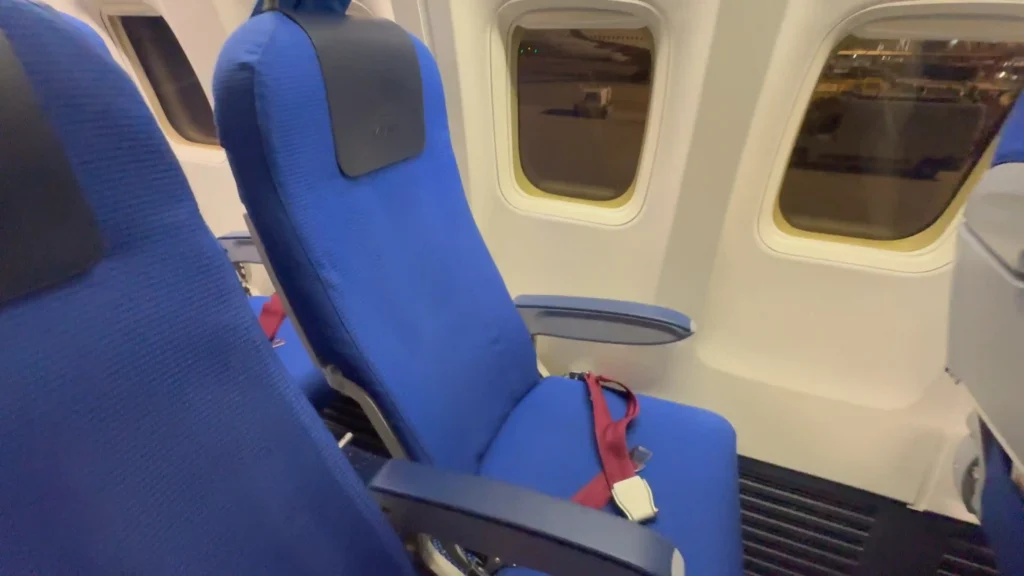
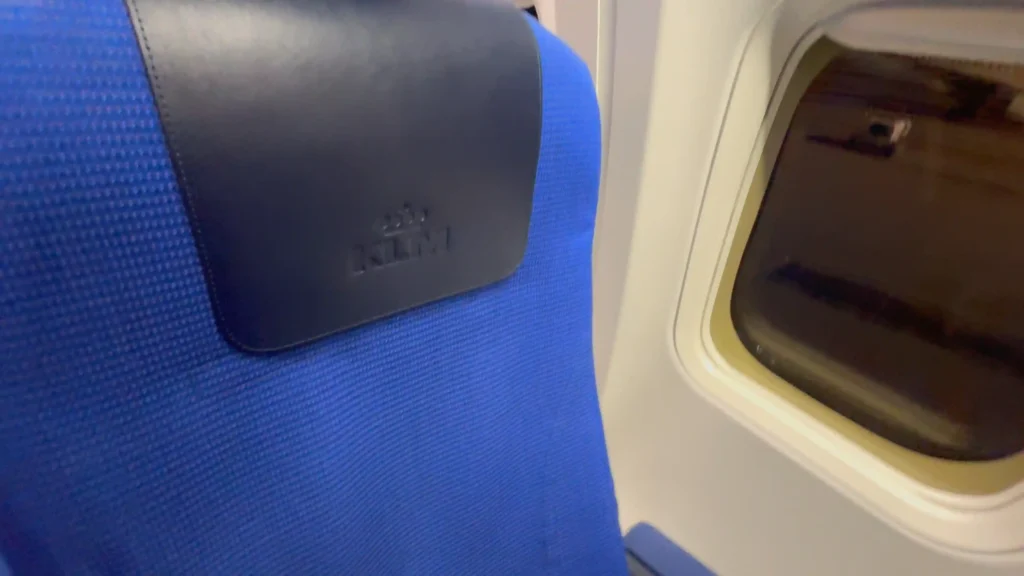
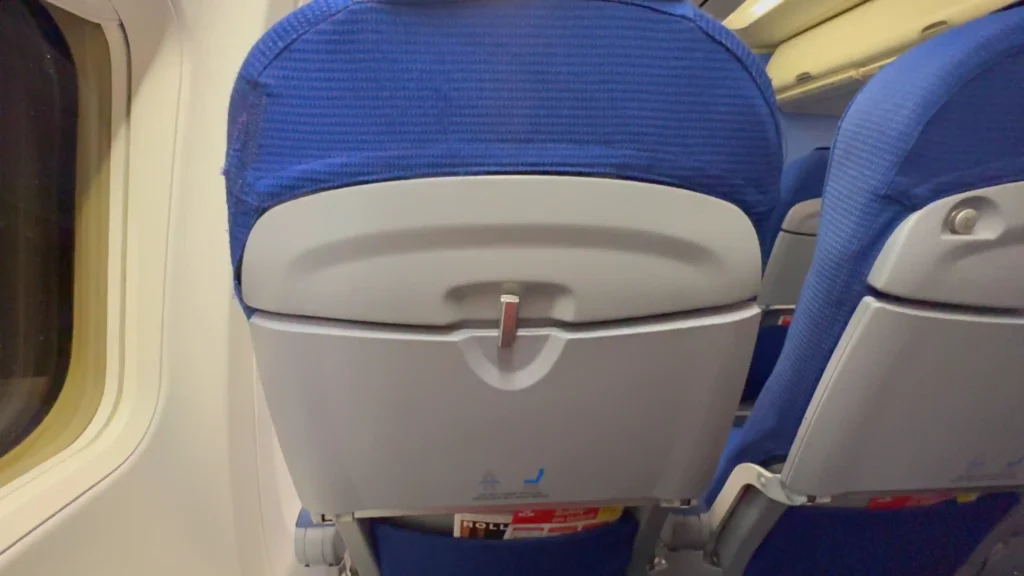
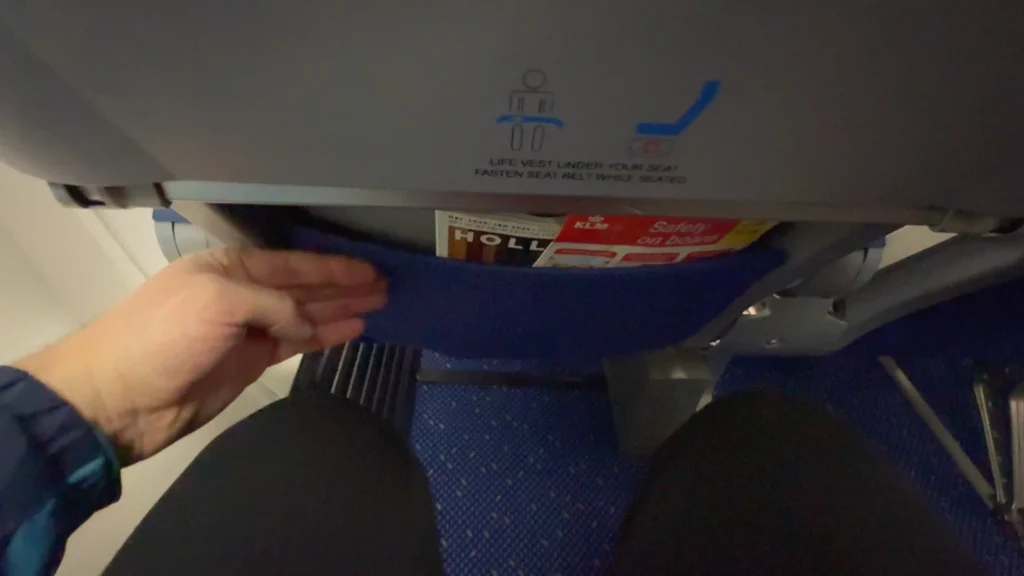
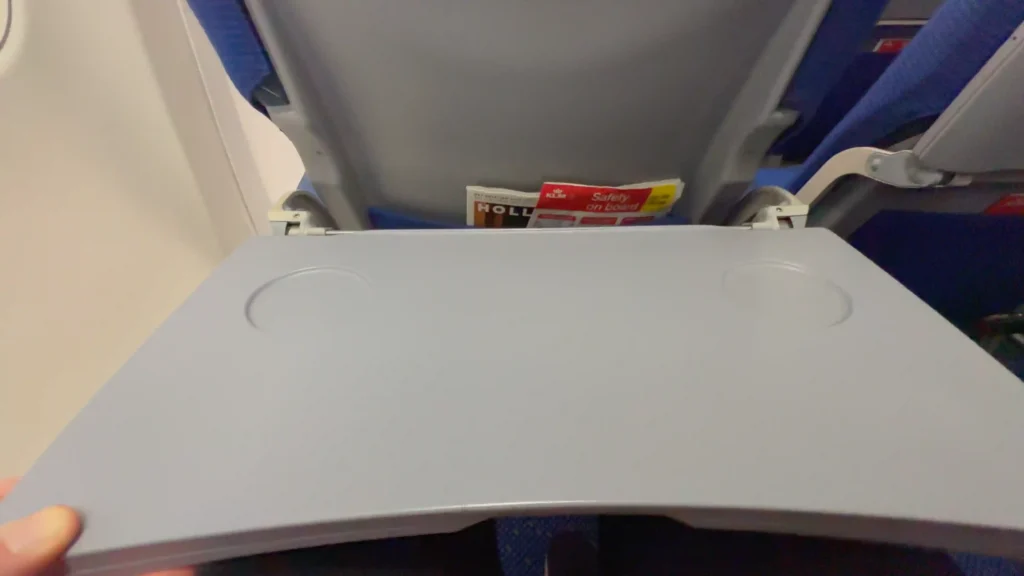
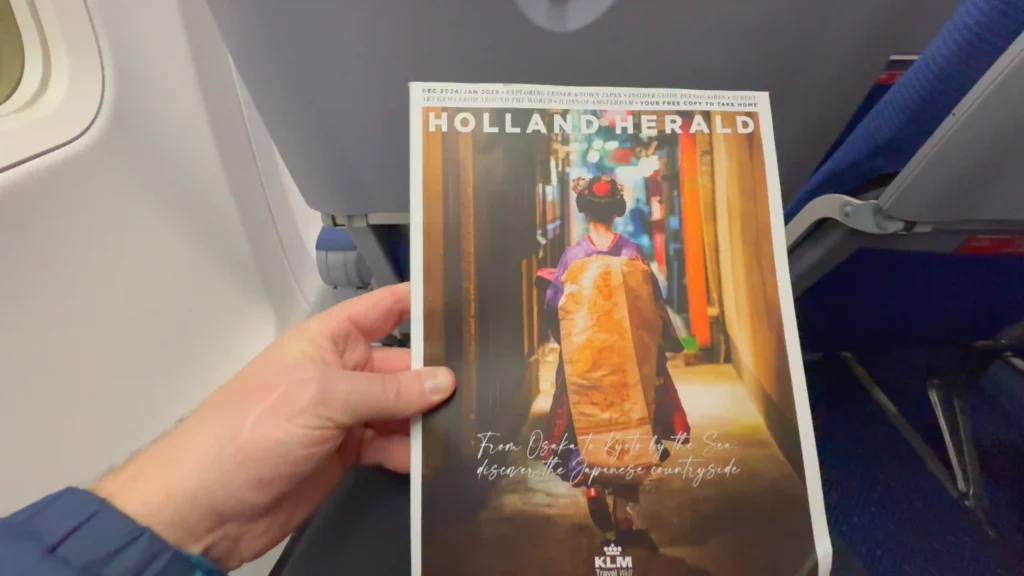
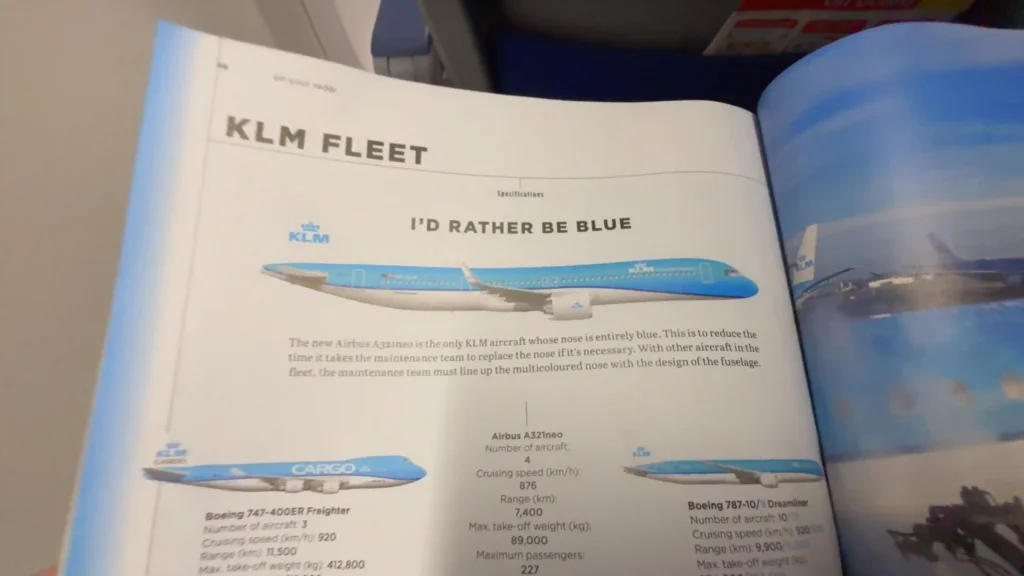
Food onboard
Breakfast on this short KLM Business Class flight from Madrid to Amsterdam was, unfortunately, underwhelming. Shortly after takeoff, the crew handed out a cardboard snack box containing a pastry and a small packet of nuts — the kind of quality you’d expect at a gas station rather than in an airline’s premium cabin.
The only real positives were the thoughtful bottle of water provided during boarding, and the coffee service, which at least was presented in charming Dutch-inspired ceramic cups, adding a touch of KLM tradition to an otherwise disappointing meal.
Compared to other European carriers, the catering felt minimalist and unremarkable. For a flagship airline ranked highly in service reputation, the breakfast offering simply didn’t match expectations.
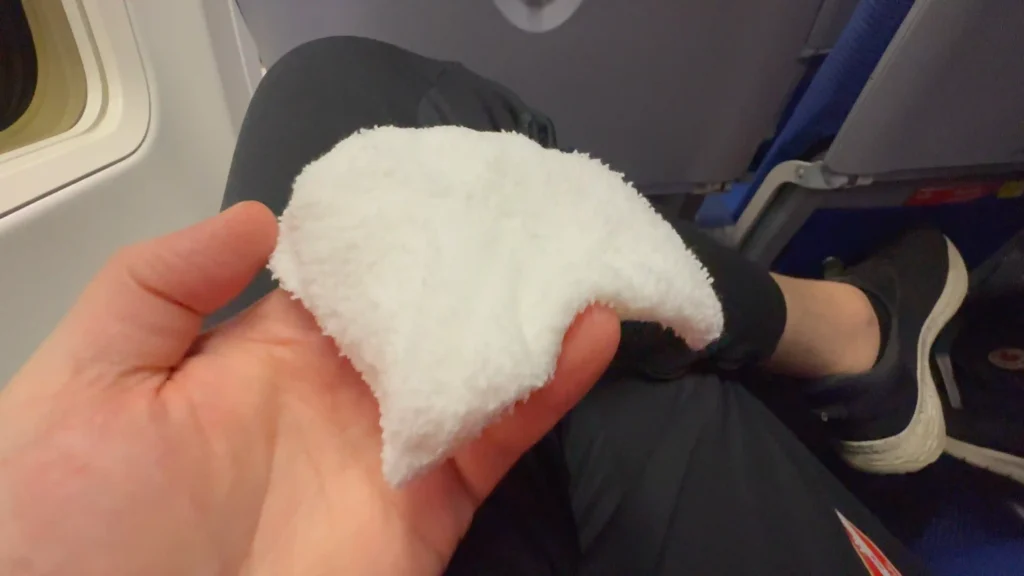
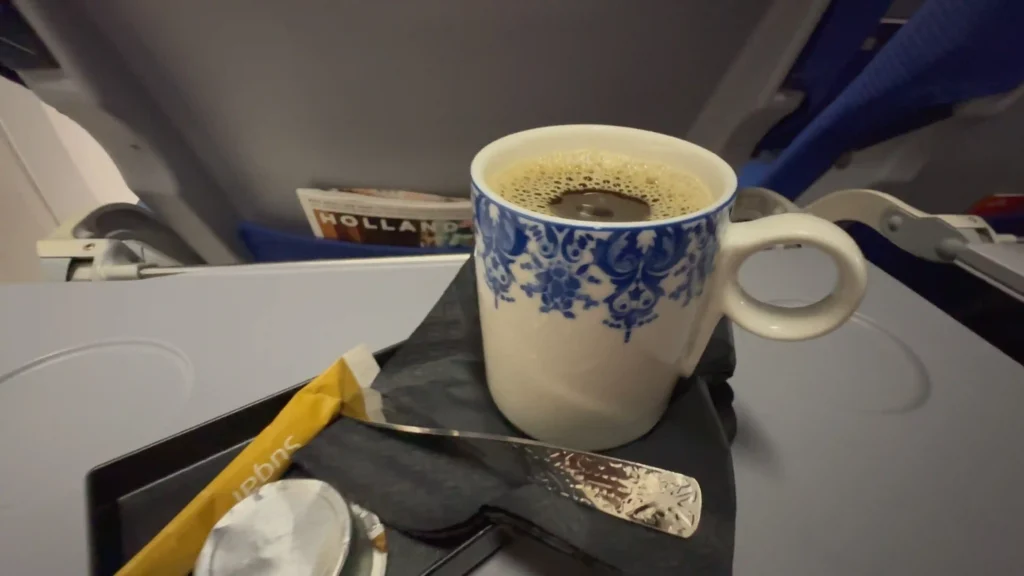




Flying from Madrid to Amsterdam
After pushback, we faced a long taxi to runway 36R at Madrid-Barajas. The departure took place in the early morning darkness, with fog and light rain adding to the moody atmosphere as we finally lined up and powered into the skies.
The climb was smooth, but further north the flight encountered light turbulence over central France, nothing dramatic but enough to remind you that winter weather can be unpredictable.
As we approached the Netherlands, the skies cleared just in time for a spectacular winter sunset approach into Amsterdam. The view of the Dutch landscape bathed in orange and red light was a highlight of the journey.
We landed ahead of schedule at Schiphol but were parked at a remote stand rather than the main terminal. This turned out to be a pleasant surprise — disembarking close to the aircraft gave a unique perspective of the KLM 737 in the fading daylight before a short bus ride brought us to the terminal.

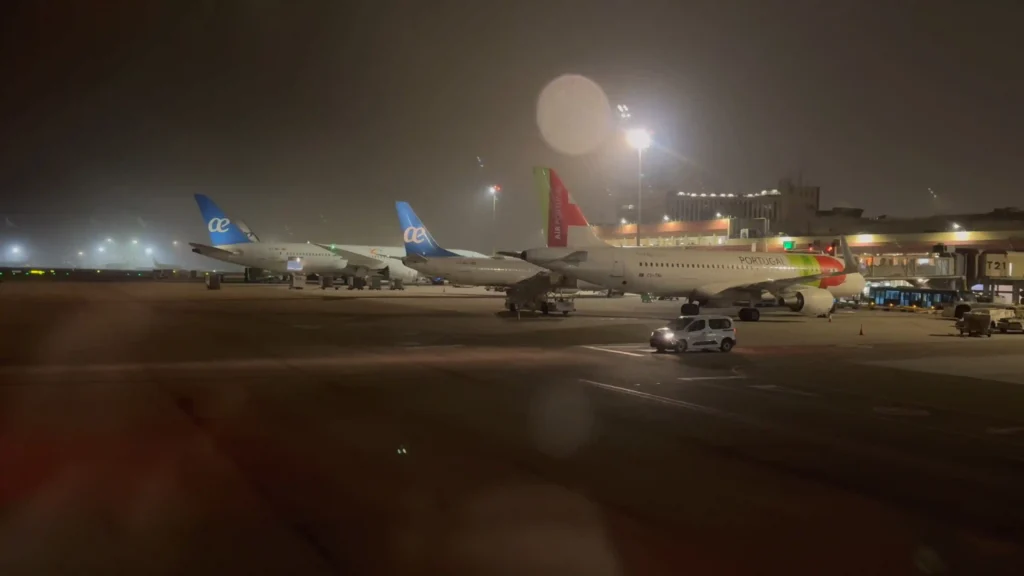



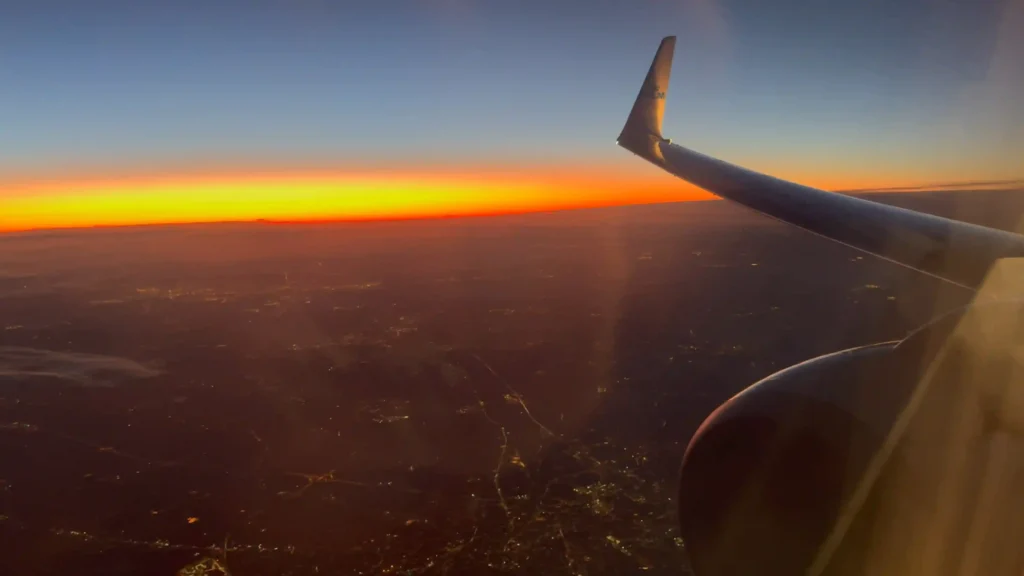
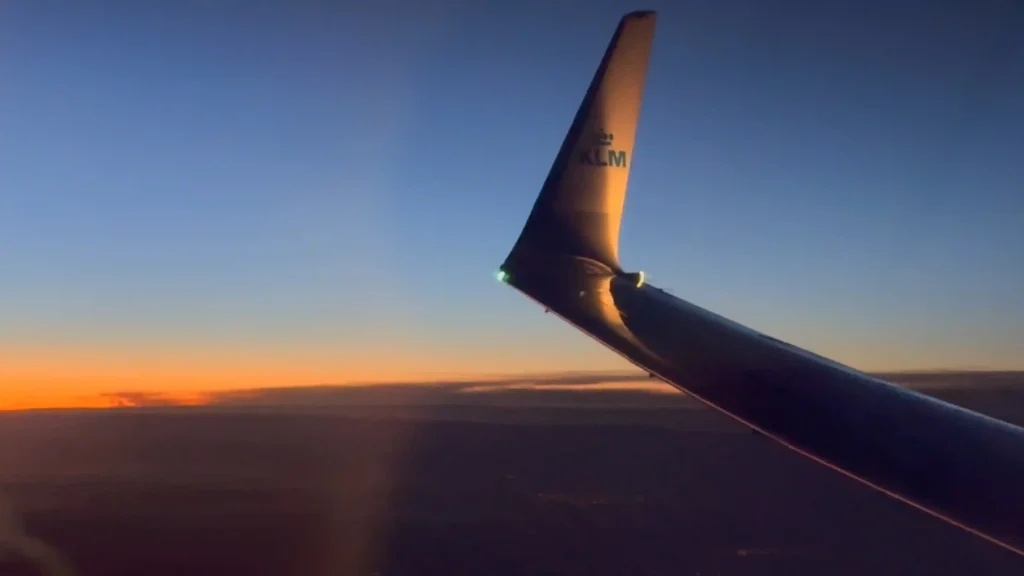
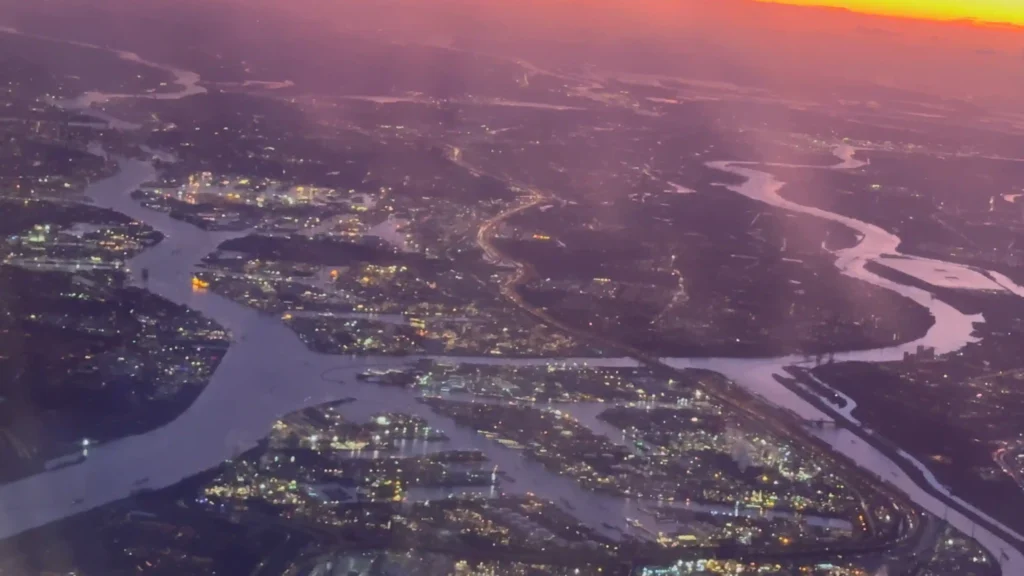
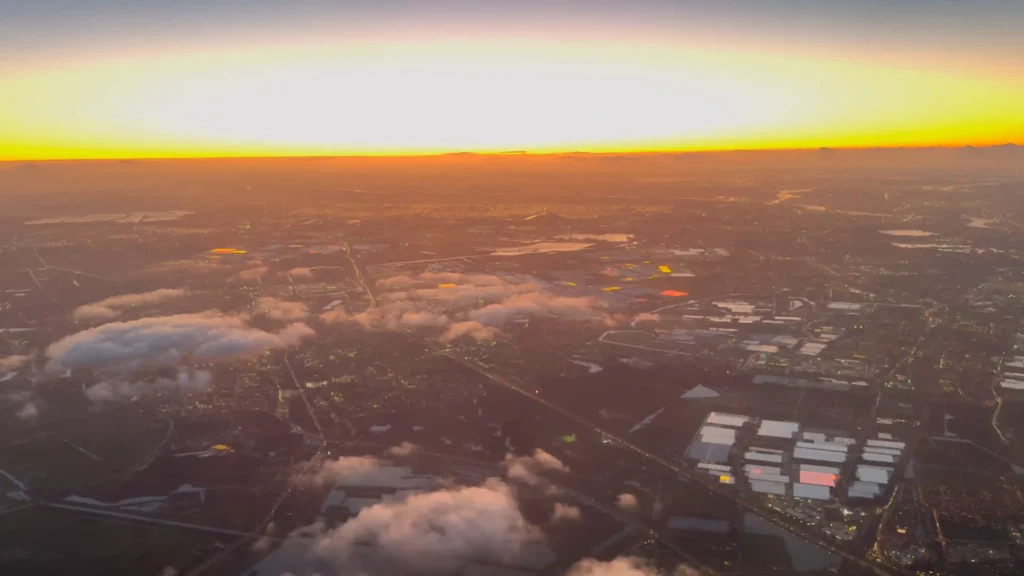




Final Verdict – KLM 737 Business Class (Madrid to Amsterdam)
Flying KLM Business Class on the Boeing 737 from Madrid to Amsterdam was a mixed experience. On the positive side, the flight was punctual, the crew were friendly, and the old-school 737 cabin, though dated, was still surprisingly comfortable. The winter sunset approach into Amsterdam was also a memorable highlight, and little touches like the ceramic coffee cups added a bit of KLM character.
However, the overall Business Class product was let down badly by the catering. A cardboard box with a pastry and nuts simply doesn’t live up to premium expectations, and is arguably the weakest meal service among Europe’s legacy carriers. Compared to Lufthansa, Air France, or even Iberia, KLM’s short-haul Business Class offering falls short.
For that reason, while the seat and service are acceptable for a short hop, I would never pay a high fare to fly Business Class within Europe on KLM. If you can book it with miles or as part of a long-haul connection, it’s fine — but as a standalone product, it is one of the least competitive options in Europe.

